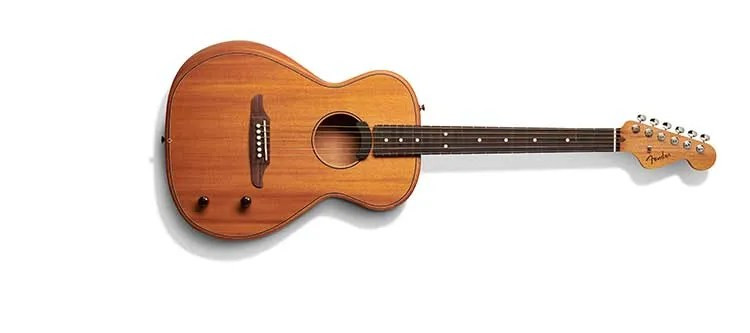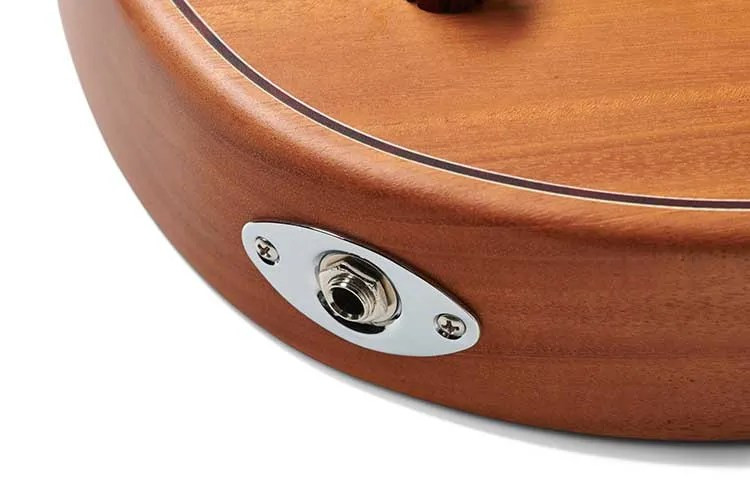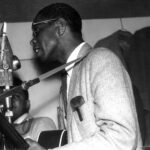For guitar enthusiasts accustomed to evaluating instruments, encountering a familiar design often brings a set of preconceived notions even before the first note is played. My initial expectations for the new Fender Highway Series Parlor were definitely shaped by the lens of “thin body acoustic crafted by a company renowned for its electric guitars.”
Many of these initial assumptions weren’t too far off the mark. Beyond the shorter scale, the guitar’s neck possesses a Telecaster-esque familiarity, the headstock and inline tuners are unmistakably Fender, and its streamlined, comfortable contours resonate with the company’s design ethos established since the inception of the Stratocaster over seventy years ago.
However, what truly surprised me was the sonic richness emanating from this remarkably compact and lightweight instrument. The sound was pleasantly full, round, and even leaning towards a robust character. It delivered a more substantial low-end response than its dimensions would suggest, while also projecting adequately for unplugged playing in intimate settings.
That being said, the Highway, equipped with its custom-designed Fishman Fluence pickup, is undeniably engineered for amplification. My testing encompassed various scenarios – through a Phil Jones Nano Bass X4 amp, directly into my Universal Audio Apollo interface, and in its purely acoustic form. Across the board, I was consistently impressed by its exceptional tone and versatility.
The Sonic Journey of the Highway Parlor
The Highway Parlor represents the smaller iteration within Fender’s new family of thin-bodied acoustic-electric guitars. Each model is available in two distinct variations: all-mahogany and spruce-topped mahogany. (My evaluation was conducted on the all-mahogany version.) In a departure from some previous attempts, the Highway doesn’t strive to mimic the aesthetic of an acoustic rendition of a popular Fender electric guitar. Instead, it’s clearly tailored for players seeking a more conventional acoustic silhouette without the bulk associated with a traditional acoustic body. Consequently, the Highway exudes a streamlined and almost aerodynamic visual appeal, characterized by elegant curves. It’s undeniably inviting at first glance.
However, much of the guitar’s intrigue lies beneath the surface. The body is chambered and incorporates a tapered floating X-bracing pattern. This innovative design contributes to a full sound profile, characterized by a rounded, rather than sharp, high-end and a rich, rather than scooped, midrange.
 Fender Highway Series Parlor acoustic-electric guitar
Fender Highway Series Parlor acoustic-electric guitar
The remaining aspects of the instrument blend acoustic and Fender electric guitar elements. The neck utilizes a three-bolt system with a tilt adjustment for neck angle – reminiscent of the design found on my 1980 Stratocaster from high school. Yet, thanks to contemporary manufacturing techniques and tighter tolerances, the current iteration surpasses its predecessors from the bell-bottom era in terms of stability. The neck sits securely in its pocket, exhibiting no dead spots across its range.
Initially, the action was slightly high for my preference. Fortunately, adjustments to both the truss rod and neck angle were easily achieved using the provided Allen wrenches. Although the test guitar lacked a manual or adjustment guide, the process proved intuitive, requiring only about five minutes to attain a highly playable setup.
The slender neck sports Fender’s familiar “C” profile, paired with a 12-inch fretboard radius. The nut width leans towards the narrower side at 1.6875 inches, and the frets are tall and narrow, similar to those found on vintage Fender instruments. Overall, the Highway offers a genuinely enjoyable playing experience. Despite the neck’s electric-like feel, I naturally gravitated towards fingerstyle acoustic techniques during my evaluation. The fretboard provides ample space for chord shapes and allows open strings to resonate freely in arpeggiated patterns. Conversely, I observed a student who typically struggles with the open G chord shape on her own acoustic guitar find it noticeably easier on the Highway, highlighting its accessibility.
Fender promotes the thin body design as enhancing player comfort. While I personally don’t find full-sized acoustics uncomfortable, the thinner, curvier profile of the Highway does necessitate a slight adjustment in playing posture. However, I recognize that many players – including the aforementioned student – can feel overwhelmed by the bulk of a deep-bodied guitar. As a complete package, the Highway is undeniably user-friendly, even for those accustomed to larger instruments.
 Fender Highway Series Parlor back
Fender Highway Series Parlor back
Innovative Electronics for Amplified Acoustic Tone
A significant aspect of the Highway’s design is the active Fishman Fluence pickup system. It distinguishes itself both visually and sonically from conventional acoustic pickups. Positioned at the soundhole’s edge, the transducer boasts a crescent shape that mirrors the soundhole’s curvature, lending it an organic aesthetic. The black pickup assembly provides a tasteful contrast against the mahogany’s café au lait finish. The guitar’s back panel incorporates a dedicated battery compartment for the Fluence’s 9-volt power source and an access panel for servicing the electronics.
Two control knobs are situated below the bridge on the right side: volume and contour. The latter control deviates from typical tone knobs by cycling through a spectrum of sonic profiles. In the fully clockwise position (typically “full-on”), the tone becomes richer and jazzier. Conversely, in the counter-clockwise extreme, the tone brightens and takes on a more purely acoustic character. Numerous nuanced shades exist within these two extremes.
Through the compact yet bass-rich Nano Bass amplifier, the Highway exhibited a deep and full sound. During reviews, my typical approach involves initiating play and allowing the instrument to guide my exploration before systematically addressing specific aspects. This guitar naturally led me to fingerstyle playing, emphasizing melodies on the lower strings. Controlling the attack and achieving a clear, potent tone proved effortless. A minor treble boost at the amplifier stage enhanced the articulation of the higher strings, but even without adjustment, the amplified balance across all six strings was remarkably impressive. While the Fluence pickup doesn’t possess the sharp attack of a piezo system, it also avoids any undesirable “squawkiness.”
Plugging directly into the Apollo interface and monitoring through headphones offered a more isolated environment to assess the electronics independently from the acoustic resonance, providing a clearer understanding of the contour control’s function. In essence, the high-end frequencies remain largely unaffected, while the midrange and low-midrange frequencies shift in response to the contour knob. Similar to the amplifier experience, the fully clockwise position accentuates low-end punch, while the counter-clockwise extreme yields a tighter bass response. The ability to tailor the midrange and precisely emphasize the lower mids would be particularly advantageous when feeding directly into a house PA system.
 Fender Highway Series Parlor output jack
Fender Highway Series Parlor output jack
Key Takeaways on the Highway Series Parlor
Fender’s vision for the Highway Series Parlor is clearly to present an alternative to traditional acoustic instruments, retaining aspects of the flattop’s form and character while catering to electric guitarists. In this objective, it achieves remarkable success. The fast neck and thin body are undeniably appealing to players accustomed to electric guitars.
Will it resonate with traditional acoustic players? It’s worth acknowledging that for seasoned players adept at lead lines on dreadnoughts or fingerpicking on nylon-string guitars, the slimmer neck profile might not be revolutionary. However, the Highway’s tonal range and the interplay of a resonant body create a unique sonic landscape that distinguishes it as much from a conventional electric guitar as it does from a traditional acoustic. I envision this instrument as a compelling option for looping artists or those exploring effects-laden acoustic music, where the desired acoustic tone is coupled with the control and familiarity of an electric guitar.

